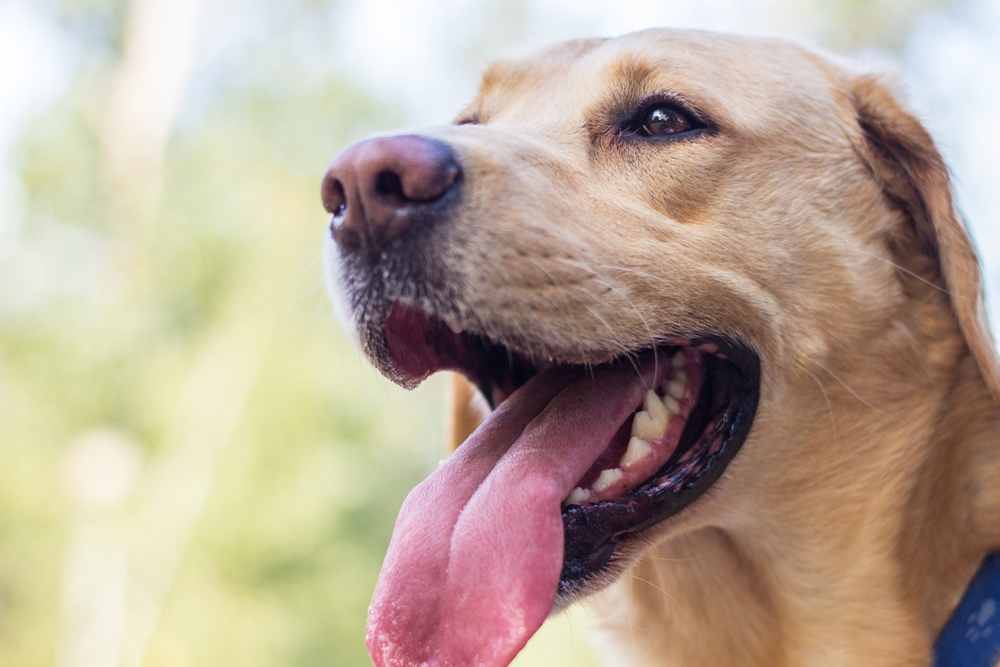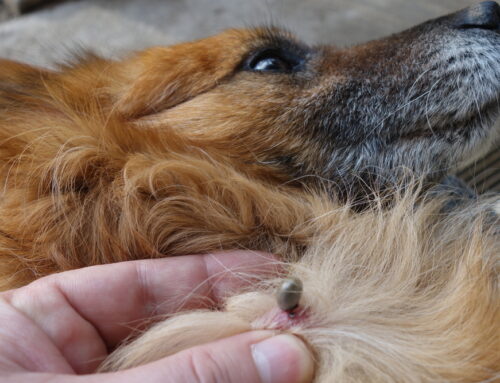When your pooch sidles up to you for a sloppy kiss, do you find yourself turning your head to deflect their affection? Do you frequently apologize to household visitors for your pet’s stinky breath? Despite popular belief, bad doggy breath is not normal—in fact, it’s a sign that things in your furry pal’s mouth have gone awry and require quick attention to prevent the problem from becoming worse. But, by joining forces with our Oliver Animal Hospital team, you can help get your pet’s dental health back on track.
What is dental disease in pets?
Dental disease in pets is not simply a matter of foul breath odor. Only hours after eating, sticky plaque forms a slimy layer on your pet’s teeth that in a few days hardens into cement-like tartar, trapping bacteria in and around the gumline. As the bacteria invade your pet’s tooth roots, they cause painful periodontal disease, infection, abscesses, and tooth loosening and tooth loss. Further, as the bacteria leach into your pet’s bloodstream, they attack distant organs such as the heart, which can be life-threatening.
While dental disease is more frequent in small breed dogs, larger dogs and cats are also frequently affected, and periodontal disease impacts the majority of dogs as they age. In fact, 70% of pets have some form of dental disease by age 3.
What are dental disease signs in pets?
While bad breath odor is usually the first sign of dental disease, tooth discoloration due to tartar accumulation usually is readily apparent, particularly on the large canine teeth. Other signs include excessive drooling, your pet shying away when you touch their head, pawing at the mouth, difficulty chewing food, and blood-tinged saliva caused by broken teeth. Your pet may have a poor appetite, although most pets hide their pain and continue to eat until the pain becomes severe.
How can you ensure your pet’s good dental health?
There are two components of thorough dental care for your pet—at-home, twice daily teeth-brushing, and your veterinarian’s professional care.
- Professional dental care for your pet — People require regular visits for routine teeth cleaning to remain healthy—likewise, pets require regular check-ups and cleanings to maintain good oral health and prevent problems. A close examination of the teeth is a crucial part of your pet’s recommended annual wellness exam. A professional cleaning may be recommended, along with dental X-rays to show the 60% of dental problems that exist under the gumline and cannot be directly visualized.
Proper cleaning and dental X-rays can only be performed thoroughly and safely with your pet under general anesthesia. Our veterinary team will first conduct diagnostic tests to ensure anesthesia will be safe for your pet. Then, once under anesthesia, they will use specialized instruments, such as an ultrasonic cleaner, to remove plaque that has mineralized to tartar. If the X-rays showed serious tooth root damage, further treatment, such as tooth extractions, may be required.
A complete professional pet teeth cleaning will include:
-
- Scaling tartar from the tooth surface, above and below the gumline
- Polishing each tooth to remove microscopic etchings created by scaling, where bacteria can adhere
- Probing the gumline for pockets that indicate periodontal disease
- Irrigating below the gumline to flush away bacteria and debris
- Rinsing with an antimicrobial solution

- Dental care for your pet at home — While the professional cleaning is extremely important, it must be supplemented with regular at-home teeth-brushing. Twice-daily tooth brushing using pet-safe products is the gold standard of at-home pet dental care. If you’ve never attempted to brush your pet’s teeth, you may be surprised at how accepting they are, especially with beef-, chicken-, or fish-flavored toothpaste. Start slowly—first touch your pet’s mouth, then reward with a treat. Next, lift the upper lip to look at the teeth. Progress to rubbing a little flavored toothpaste on the teeth, allowing the pet to lick it off. Once your pet becomes comfortable with your fingers in their mouth, gently rub the outer surface of the teeth with a finger brush and a small dab of toothpaste. Each step of the way, provide plenty of treats and praise, and don’t rush the process.
However, if your pet does object, or the routine is impractical for you, many other methods are available, including chews, oral rinses, and cleansing agents that can be added to your pet’s drinking water to delay plaque build-up. Ask your veterinarian for their recommendation, and always use products approved for pet use by the Veterinary Oral Health Council (VOHC). Never use toothpastes intended for human use, because many contain sweeteners that can be toxic to pets. Regardless of the method you chose for at-home care, most important is developing, and sticking to, a daily routine.
Now you know that dental disease in your pet is much more than foul breath, contact our southwest Austin veterinary hospital, to schedule their wellness examination and dental evaluation or cleaning, or to discuss at-home dental care.







Leave A Comment